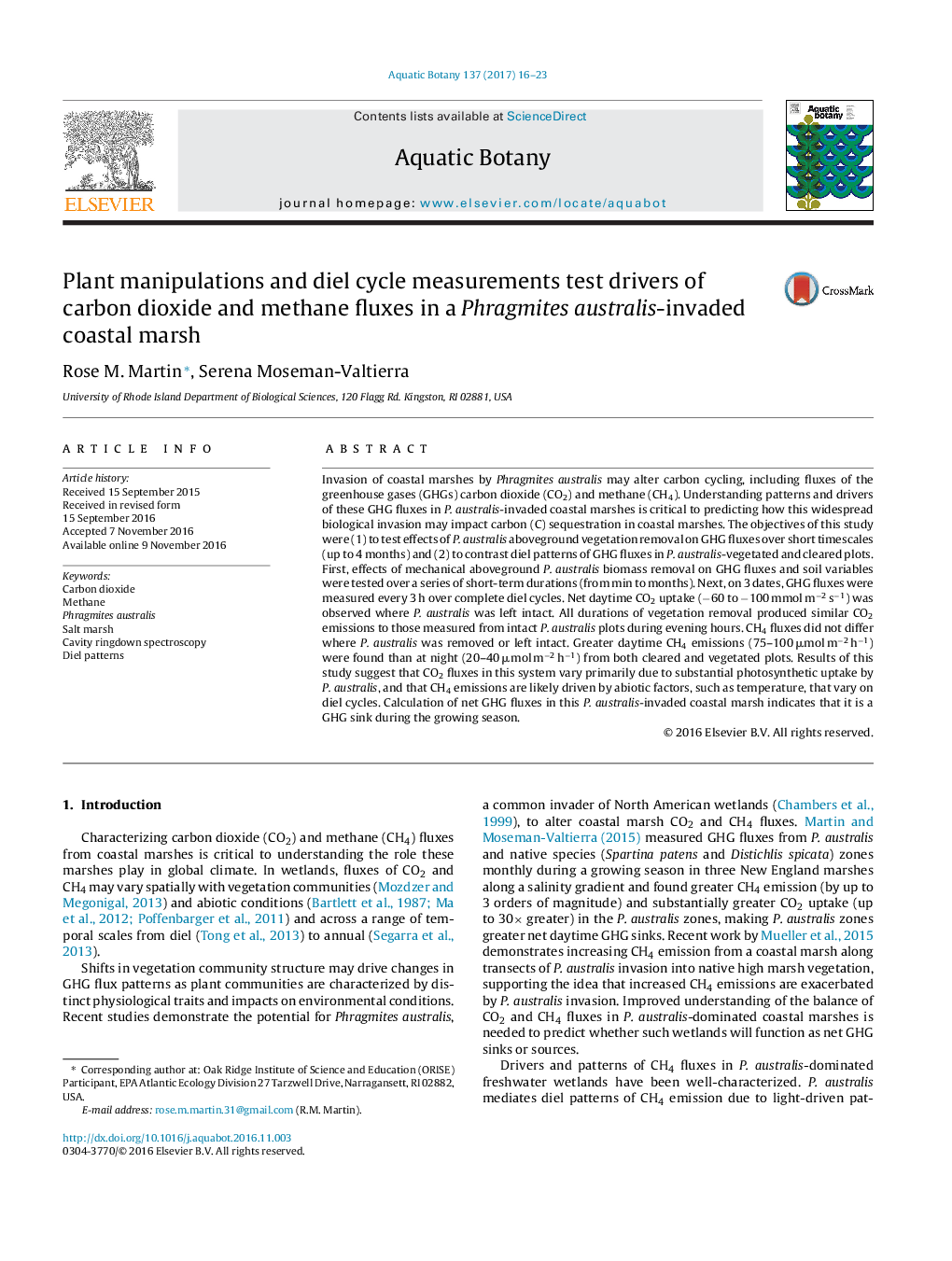| کد مقاله | کد نشریه | سال انتشار | مقاله انگلیسی | نسخه تمام متن |
|---|---|---|---|---|
| 5764037 | 1625805 | 2017 | 8 صفحه PDF | دانلود رایگان |

- Carbon dioxide fluxes were driven mainly by Phragmites australis photosynthetic uptake.
- Methane fluxes varied on diel cycles, with greater emissions during day than evening.
- Methane fluxes were not driven by P. australis-mediated transport.
- This P. australis-invaded wetland was a net GHG sink during the growing season.
Invasion of coastal marshes by Phragmites australis may alter carbon cycling, including fluxes of the greenhouse gases (GHGs) carbon dioxide (CO2) and methane (CH4). Understanding patterns and drivers of these GHG fluxes in P. australis-invaded coastal marshes is critical to predicting how this widespread biological invasion may impact carbon (C) sequestration in coastal marshes. The objectives of this study were (1) to test effects of P. australis aboveground vegetation removal on GHG fluxes over short timescales (up to 4 months) and (2) to contrast diel patterns of GHG fluxes in P. australis-vegetated and cleared plots. First, effects of mechanical aboveground P. australis biomass removal on GHG fluxes and soil variables were tested over a series of short-term durations (from min to months). Next, on 3 dates, GHG fluxes were measured every 3 h over complete diel cycles. Net daytime CO2 uptake (â60 to â100 mmol mâ2 sâ1) was observed where P. australis was left intact. All durations of vegetation removal produced similar CO2 emissions to those measured from intact P. australis plots during evening hours. CH4 fluxes did not differ where P. australis was removed or left intact. Greater daytime CH4 emissions (75-100 μmol mâ2 hâ1) were found than at night (20-40 μmol mâ2 hâ1) from both cleared and vegetated plots. Results of this study suggest that CO2 fluxes in this system vary primarily due to substantial photosynthetic uptake by P. australis, and that CH4 emissions are likely driven by abiotic factors, such as temperature, that vary on diel cycles. Calculation of net GHG fluxes in this P. australis-invaded coastal marsh indicates that it is a GHG sink during the growing season.
Journal: Aquatic Botany - Volume 137, January 2017, Pages 16-23